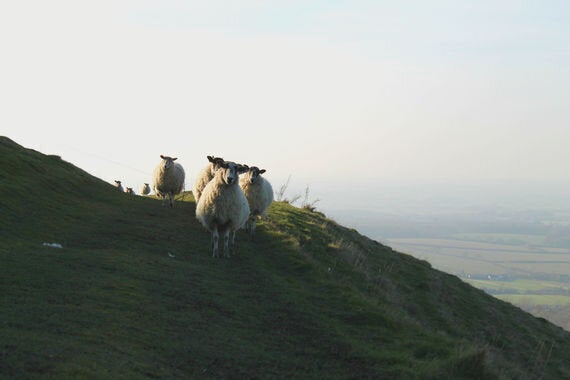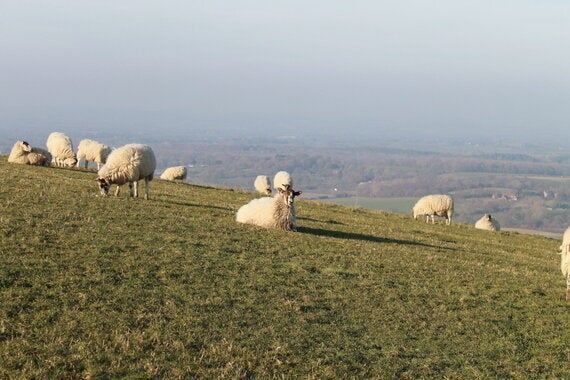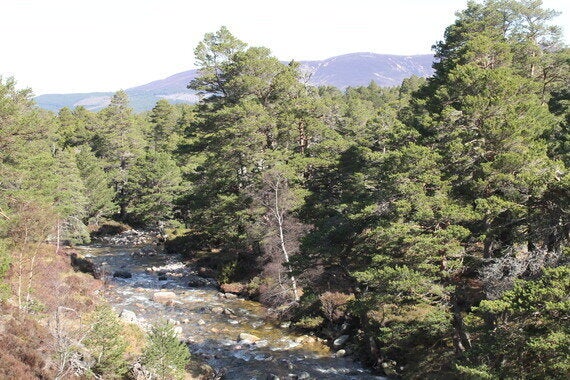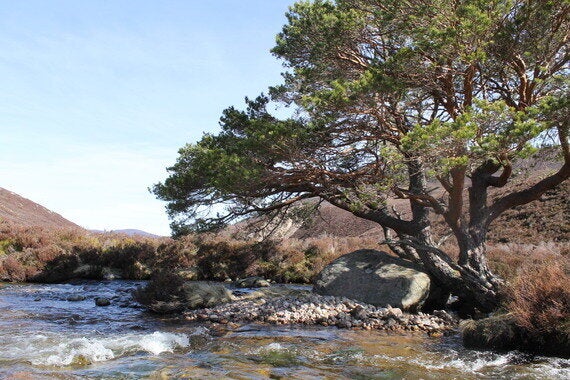The upland environment covers a third of Britain. It is a cherished landscape, close to the hearts of most of us. Much of this landscape is within National Parks celebrated for their 'natural beauty'. Yet, for the most part, whilst they are beautiful, they are a far way from a natural environment. They are overgrazed sheep pastures and burnt grouse moors.
The army of sheep marches through our uplands, eating all in their wake and leaving no food for the native animals that would naturally live there. The moors are burnt by gamekeepers to create ideal grouse habitat, at the expense of all other animals and plants. The result is a landscape engineered for one species to thrive, the exact opposite of what a natural environment should provide.

If you look at an aerial photo of the upland moors of Britain, the scars from heather burning are the most striking feature of the landscape. If you visit the tops of Bowland or the Yorkshire Dales, you can witness first-hand the wildlife desert that smothers vast areas of the uplands. The place is silent. There is no birdlife or mammals. Only grouse and sheep.
Burning moorland doesn't just choke the life out of the peat moorland ecosystem. It uncovers the peat, allowing it to dry out, be eroded and leached into watercourses, raising their acidity. Peat bog is basically solid carbon, the largest carbon store in Britain, and releasing this carbon into the environment could have a huge impact on climate change.
Overgrazing of sheep exposes the soil to the action of wind and rain, making it organically poor, dry, compacted and eroded. The reduction in biodiversity in sheep pasture also denies the soil nutrients, which would naturally be provided by the native plants and animals dying, decomposing and enriching the soil. Overgrazing also favours the spreading of invasive species, such as bracken and bramble, which further damage the environment.

But not all of of the uplands is grouse moorland and sheep grazing. Walk along Glen Feshie, in the Cairngorms, or the River Liza in Ennerdale on a spring morning, and find the wooded riverbanks alive with birds. Crested tits, goldcrests, dippers, finches, woodpeckers.
These small pockets of self willed land are a sweet contrast to the barren mountainsides, burnt for grouse and desecrated by sheep. They give us an insight into what a wild landscape can offer by providing a range of habitats; trees, moorland, water and grass meadow. This range of habitats supports varied wildlife, and this what the uplands of Britain are missing. This is why they are silent.
Rewilding is the process of creating self willed land. Land that is not managed by humans, but flourishes because of the animals and plants that nurture it naturally. A number of rewilding projects are being carried out throughout the United Kingdom, including at Ennerdale in the Lake District, the Cambrian Mountains in Wales and Carrifran Wildwood in the Southern Uplands of Scotland. The aim of all of these projects is to provide a landscape that supports a wide range of species and natural processes, without human interference.
The rewilding movement gives Britain a chance to spread animals to the desolate grouse moors by providing more diverse, natural habitats. This, in turn, would increase vegetation cover, which would help to stop the erosion of the peat bogs exposed by heather burning, and the soil left scarcely covered by sheep grazing.
The reduction in grazing and scarring from burning the moors would create a more naturally beautiful landscape. Areas dedicated to wildlife would help to protect some of Britain's most famous and cherished species.

More diverse habitats could also allow for the reintroduction of species that previous generations have persecuted and are now clinging on in a fraction of their former range, such as pine martens, golden eagles, capercaillie, wildcats and red squirrels. And it gives us the chance to bring back species which were completely eradicated by our forebears, like the lynx. With enough public understanding and support, maybe one day wolves, the ultimate symbol of wilderness, could be reintroduced to our land.
Rewilding the British uplands wouldn't only bring benefits to the animals and plants, but also to the British people. Locals and tourists alike would be able to enjoy spending time in these enriched, diverse areas. The greater range of species would also attract more wildlife tourists to the uplands, creating far more employment opportunities than grouse shooting or sheep grazing.
Most importantly, rewilding would give people the opportunity to reconnect with nature and a chance to feel the wonder that being in a wild place can evoke. This is why we should rewild the British uplands.

This article was written by Elena Manighetti, author of The Healthy Veggie, and Ryan Osborne.